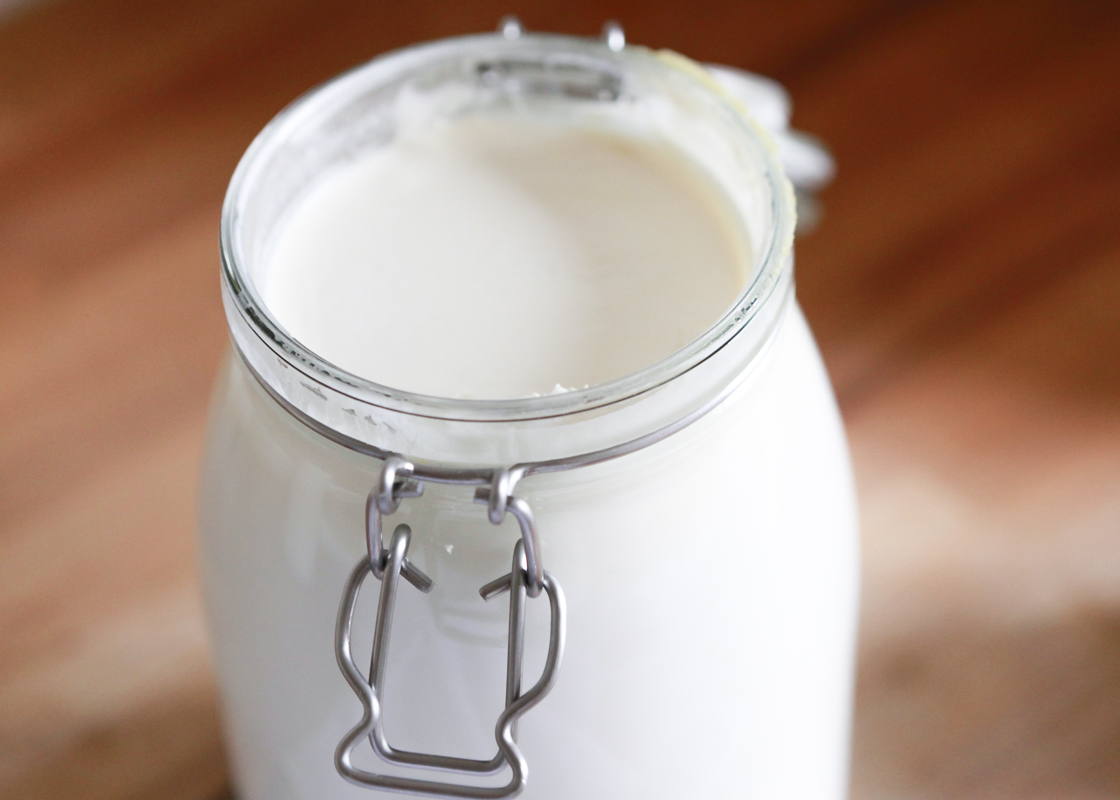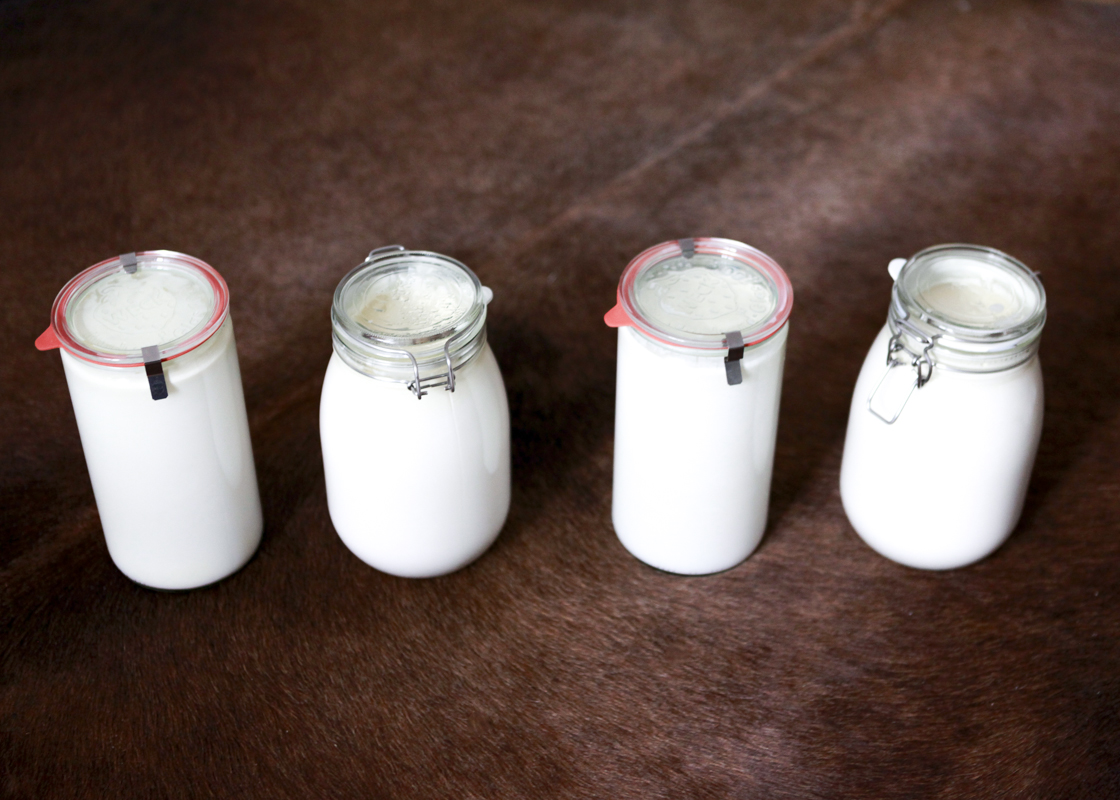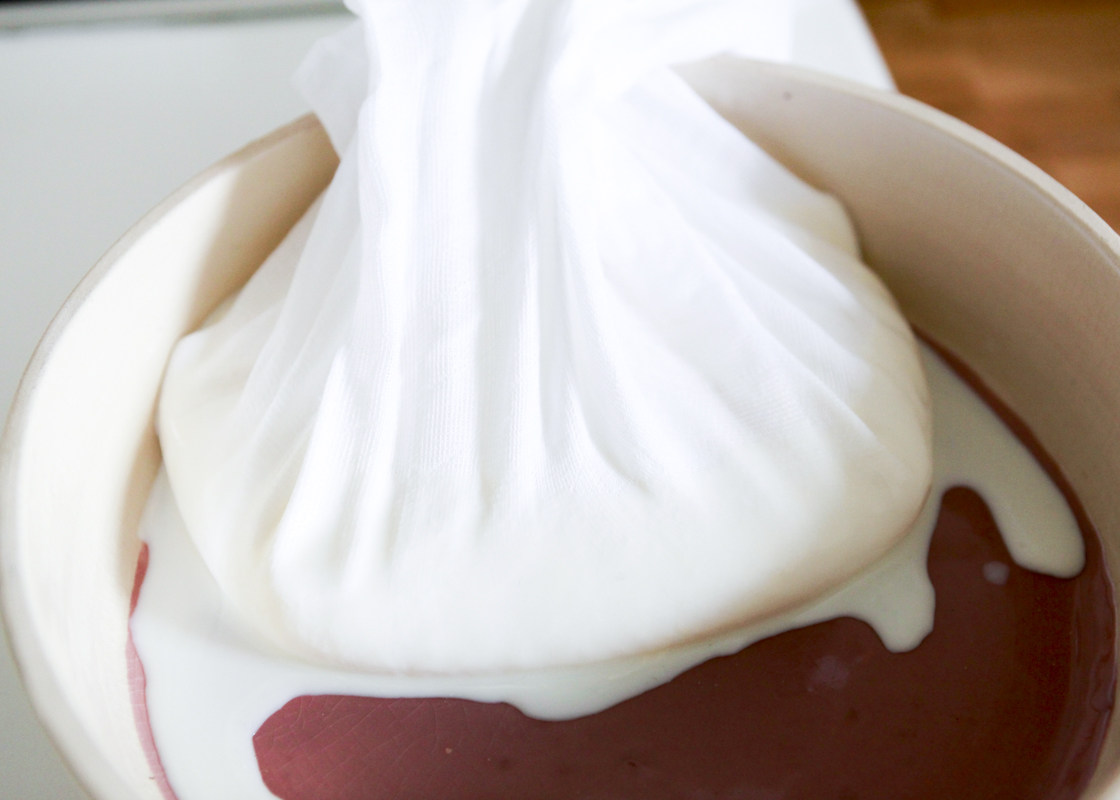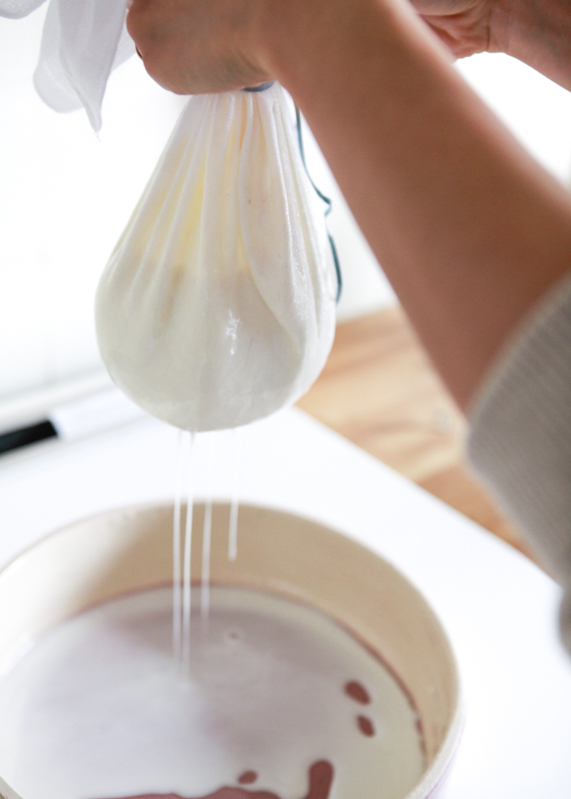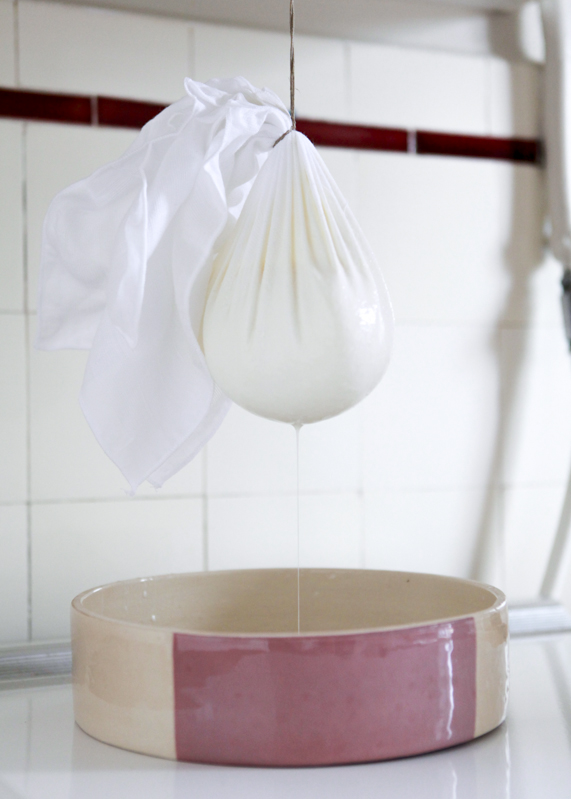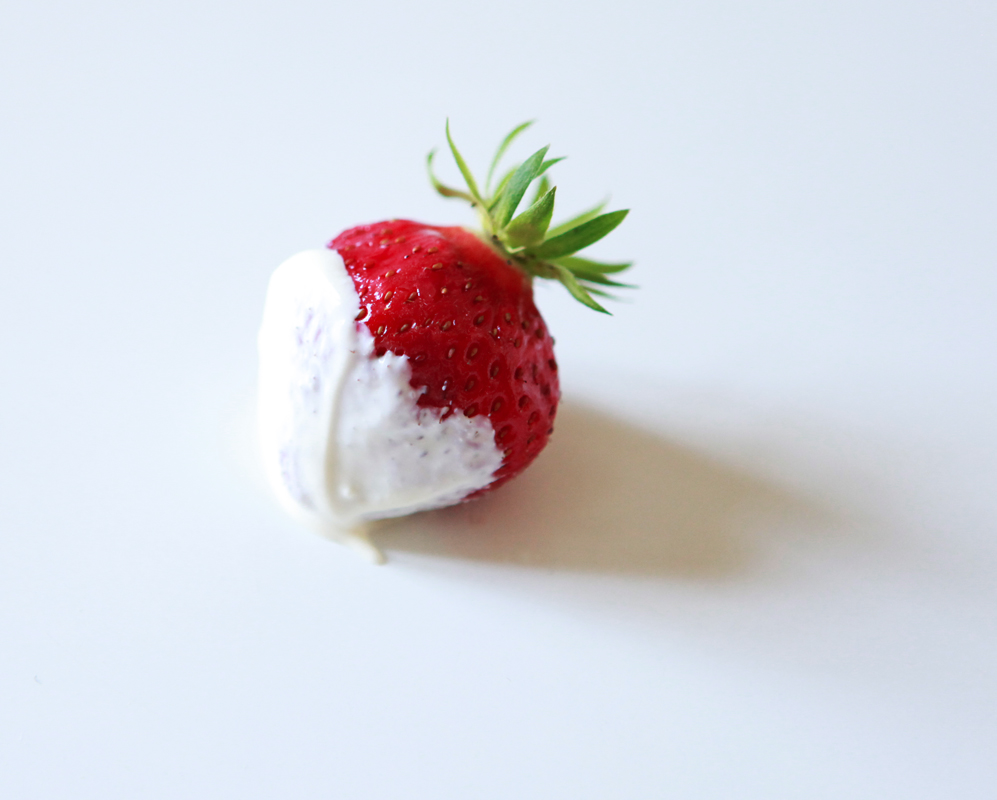I love milk and I’m not ashamed to admit it.
While some health-minded folk may beg to differ, I still believe that milk, and I mean Milk with a capital “m”: full-fat, unpasteurized (raw, alive), and brimming with all its inherent beneficial bacteria and enzymes, is a super-food. (For full milky manifesto, see here).
As raw milk is not only hard to find, but downright criminalized in most of the U.S., you can imagine my excitement when life swept me across the Atlantic to Switzerland – land of the pasture-grazing, mountain-side-roaming, behorned and, sometimes, beflowered cow. And you can imagine my disappointment when I found that, unless you’re living in a dairying village, the most widely accessible dairy foods—including butter and yogurt–have been pasteurized.
And while raw milk isn’t anywhere near illegal here, procuring it does require a bit of inventiveness.
The kind of inventiveness that found Lu & me, three buses and one long walk later, in the possession of a 10-liter plastic bucket filled to its brim with lait cru. You’re probably wondering what would possess two people to purchase such a large quantity of such a perishable foodstuff all at once. Well, quite simply, it was the smallest amount available. So what’s a couple to do when they want the benefits of raw milk in their lives but only have access to an impossible amount? Make raw-milk yogurt, of course!
Without pasteurization, the shelf life of a glass of milk is short—3-4 days, tops. This explains why, traditionally, dairy consumption revolved, not around fresh glass with cookies, but ferments: cultured butters, moldy cheeses, effervescent kefir, creamy yogurt, to name a few.
My first experience with homemade yogurt was, incidentally, in Greece. The process is simple: heat milk, add bacterial culture (or spoonful of bacteria-rich yogurt or starter) and let ferment in an incubator (or wrapped in sweaters or towels as pictured) for four-eight hours. Our notion of yogurt is much thicker, much firmer than, for example, than the dahi of India because we heat our milk past the point of pasteurization in the process. While this produces a denser, creamier product, it also destroys all the raw-some qualities of the milk.
It’s possible to make yogurt with milk that is still, technically, raw. Raw-milk yogurt’s consistency is somewhere between drinkable and eatable. We’ve been spreading ours on pancakes, making bircher muesli (overnight oats), and pouring it in mugs over a spoonful of turmeric and honey. It will keep in your fridge for weeks if well-sealed.
Raw-Milk Yogurt
#1. Heat milk to 110-115F. If you don’t have a kitchen thermometer, this is roughly halfway to boiling. (The milk should be warm, not at all hot).
Make sure to constantly stir, as any scorching at the bottom will affect the consistency of your yogurt.
#2. While milk is heating, sterilize glass jars by pouring boiling water into them.
Let water sit in the jars until milk is ready for transfer, as you want them to be warm for best fermentation results.
#3. Pour milk into warmed jars, leaving a bit of room at the top. Add spoonful of yogurt from either a yogurt starter or a commercially produced yogurt with live-bacteria cultures and stir.
If you’re using bacteria from a commercially produced yogurt, you will have to continue to do so every time you make yogurt (meaning, you can’t just use a spoonful from your last batch). If you’re able to find a starter, you’ll be able to use last batch spoons every time.
#4. Seal and wrap in sweaters or towels or use an incubator, if you have one (fancy!). Place near a heater.
#5. Ferment from 4-8 hours. Experiment with the time! Some recipes call for ferments as long as 24-hours. I usually let it ferment overnight.
#6. You just made yogurt! Enjoy! Or:
- If you’d like your yogurt to be a bit thicker, and if you’d like some whey (for, perhaps, some lacto-fermented veggies) you can strain your yogurt.
- Line a bowl with some cheesecloth and pour your yogurt into the cloth. Fasten cloth and let hang over an empty bowl for two or so hours. Voila: thicker yogurt!
- The contents in your bowl are whey—you can store this in your fridge for up to a week and in the freezer for three months.
